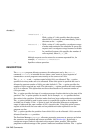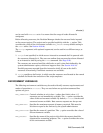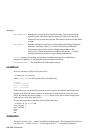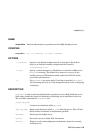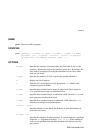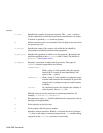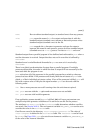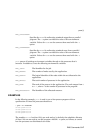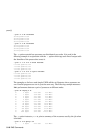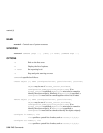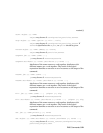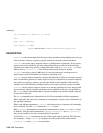prun(1)
DESCRIPTION
The prun program executes multiple copies of the specified
program on a partition.
prun automatically requests resources for the program unless it is executed from a shell
that already has resources allocated to it. (See
Page 5-3).
The way in which processes are allocated to CPUs is controlled by the -c, -n, -p, -B and
-N options. The -n option specifies the total number of processes to run. The -c option
specifies the number of CPUs required per process, this defaults to 1. The -N option
specifies how many nodes are to be used.
If the -N option is not used then the scheduler selects CPUs for the program from any of
the available nodes. Where possible RMS will allocate a contiguous range of nodes, but
will only be constrained to do so if the -B or -R hwbcast=1 options are set. If the -N is
used, the scheduler allocates the specified number of nodes (allocating a contiguous
range of nodes if possible) and the same number of CPUs on each node. By default, a
contiguous range of nodes is allocated to the request where possible. This enables
programs to take advantage of the system’s hardware broadcast facilities. The -R option
can be used with hwbcast set to 1 to ensure that the range of nodes allocated is
contiguous.
The -B option specifies the base of a contiguous range of nodes relative to the start of the
partition. The -N option specifies its extent. So for example -B0 -N4 specifies the first
four nodes in the partition. Note that nodes that have been configured out are excluded.
The -B option should be used to gain access to a specific file system or device that is not
available on all nodes. If the -B option is used, the scheduler allocates a contiguous
range of nodes and the same number of CPUs on each node. Using this option causes a
request to block until the base node and any additional nodes required to run the
program are free.
The -I option specifies that resource requests should fail if they cannot be met
immediately. The default is to block until CPUs are available.
The -m option specifies how processes are to be distributed over nodes. The choice is
between block (the default) and cyclic. If a program has n processes with identifiers
0,1,...n-1 distributed over N nodes then, in a block distribution, the first n/N
processes are allocated to the first node and so on. If the distribution is cyclic, process 0
runs on the first node, process 1 on the second and so on until process N-1 is placed on
the last node, at which stage the distribution wraps around, with process N running on
the first node and so on.
The -p option specifies the partition to use. If no partition is specified then the default
partition is used. The default partition is stored in the attributes table. (See
Section 10.2.3). Note that use of the root partition (all nodes in the machine) is
restricted to administrative users.
RMS Commands 5-13



